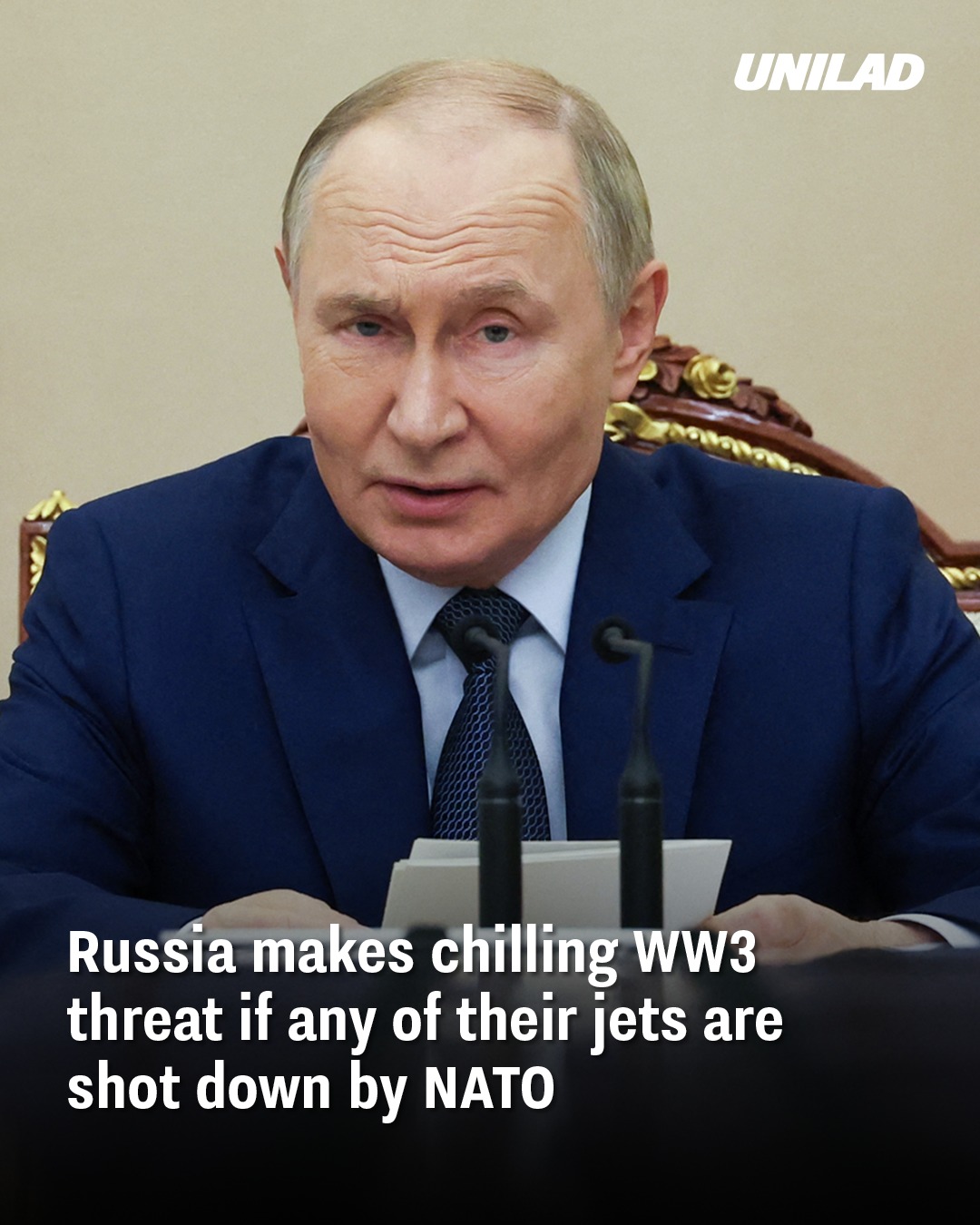Tensions Escalate Between Russia and NATO: A Global Crisis Looms
In a chilling development, Russia has issued a stark warning about the potential consequences if any of its jets are shot down by NATO forces. The escalating tensions between Russia and the West, especially after several airspace violations, have created a tense atmosphere that could have significant implications for global security.
Rising Tensions: A Series of Violations
In recent weeks, tensions between Russia and NATO countries have been on the rise. These tensions came to a head when Russia was accused of violating the airspace of NATO countries, further straining relations that were already at a tipping point. The situation took a more alarming turn when a trio of Russian MiG-31 fighter jets allegedly crossed into Estonia’s airspace for about 12 minutes last week.
Estonian Foreign Minister Margus Tsahkna immediately condemned the incursion, calling it “unprecedentedly brazen.” According to Tsahkna, this is not the first time this year that Russia has violated Estonian airspace. “Russia has violated Estonian airspace four times already this year, which is unacceptable in itself, but today’s violation, during which three fighter jets entered our airspace, is unprecedentedly brazen,” Tsahkna remarked.
In the wake of this incident, the Estonian government urged NATO to respond rapidly with political and economic pressure on Russia. The violation, however, was denied by Moscow, which claimed that its jets were simply flying over neutral Baltic waters and not Estonia’s airspace.
This event followed closely on the heels of another serious violation when Russian drones crossed into Polish airspace. Poland’s Prime Minister Donald Tusk confirmed that a significant number of Russian drones had entered Polish airspace. Some of these drones posed a direct threat and were shot down by Polish forces. Subsequently, Poland invoked NATO’s Article 4, requesting consultations among NATO members regarding the security threat posed by these incursions.
NATO’s Response and the Threat of War
In response to these increasingly hostile actions by Russia, former President Donald Trump weighed in, asserting that NATO countries should take aggressive action if Russian jets breach their airspace again. “Yes, I do,” Trump said when asked if NATO should shoot down Russian jets if they continue to violate airspace. This statement, while not official NATO policy, added fuel to the already volatile situation.
However, Russia’s ambassador to France, Alexey Meshkov, sharply warned that any NATO attempt to shoot down Russian aircraft would be met with severe consequences. In a translated RTL article, Meshkov explained, “You know, there are many NATO aircraft that violate Russian airspace… it happens quite often. Afterwards, they are not shot down.” This remark hints at the dangerous game of escalation that both sides are playing, with the potential for war looming on the horizon if either side miscalculates the situation.
The situation is made even more precarious by the ongoing conflict between Russia and Ukraine. Ukrainian President Volodymyr Zelenskyy has continued to warn the international community of Russia’s aggressive intentions, emphasizing that no one in Europe should feel safe. At the United Nations, Zelenskyy declared, “Putin will keep driving the war forward, wider and deeper.” He further stated, “We told you before: Ukraine is only the first. Now, Russian drones are already flying across Europe, and Russian operations are already spreading across countries.”
This statement underscored the expanding nature of the conflict, with Russia’s military activities extending far beyond Ukraine’s borders. The threat of widespread conflict, including the possibility of a World War, has become more tangible as NATO countries grapple with the decision of how to respond to Russian provocations.
The Bigger Picture: Global Repercussions
The mounting tensions between Russia and NATO are not just a regional issue but have far-reaching implications for global security and stability. Any misstep or escalation could trigger broader military engagements, possibly pulling multiple countries into the conflict. With both sides standing firm, the situation could quickly spiral out of control, affecting not just Europe but the entire world.
This new level of aggression in the skies—whether it’s the violation of airspace by Russian fighter jets or the deployment of drones—signals a shift in military strategies and tactics. Nations are being forced to reconsider their defense policies, as airspace violations, drone warfare, and the rapid escalation of tensions make traditional notions of territorial integrity and sovereignty even more complex.
Countries worldwide are closely monitoring the situation, with many fearing that these military actions may be the first steps in a broader conflict that could soon involve more nations. As the world watches, the looming specter of World War III becomes increasingly more likely.
What’s at Stake?
The threat posed by these airspace violations and the possibility of NATO countries shooting down Russian jets is not just about military superiority—it’s also about maintaining a balance of power. With NATO countries already under heightened alert and Russia flexing its military muscle, there is a delicate balance that could tip into conflict at any moment.
This crisis represents not only the failure of diplomacy but also a test of international alliances and the ability of world leaders to avert disaster. As tensions mount, NATO’s next moves will be crucial in determining whether peace can still be maintained or if the world will be drawn into a new global conflict.
For More Insight Into Global Affairs, Check Out These Articles:
- Man Loses 360 Pounds Naturally, Internet Rallies to Support His Next Step
- Tammy Hembrow’s Bikini Photos Are Stirring Controversy – Here’s Why Everyone’s Talking
Conclusion: The Ticking Time Bomb
The recent threats made by Russia over the downing of its jets by NATO forces are a stark reminder of how quickly tensions can escalate into a global conflict. With both sides engaged in a dangerous game of brinkmanship, the world watches with bated breath, hoping that diplomacy will prevail. As NATO and Russia face off, the possibility of World War III becomes more real, and the need for careful negotiation and restraint has never been more urgent.
The situation underscores the importance of strong international alliances, the role of diplomacy, and the delicate nature of peace in a world increasingly fraught with military provocations and political instability. Only time will tell whether the world can avoid a catastrophic conflict or if this will be the moment when tensions finally boil over.



